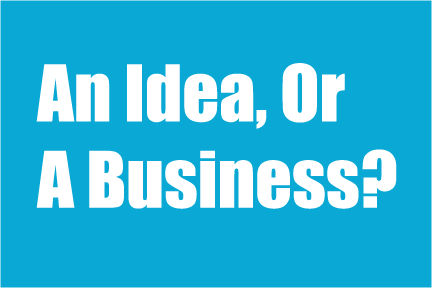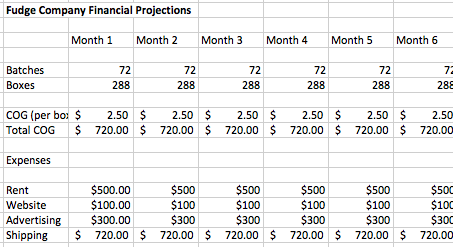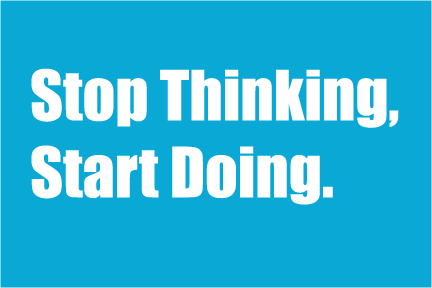Physical Address
304 North Cardinal St.
Dorchester Center, MA 02124

 Over the past couple of weeks we’ve been sharing our thoughts on starting a business, why you might want to do it, what experience you need, and the most important thing you need to do. But none of that means anything if you can’t eventually make money with your new startup.
Over the past couple of weeks we’ve been sharing our thoughts on starting a business, why you might want to do it, what experience you need, and the most important thing you need to do. But none of that means anything if you can’t eventually make money with your new startup.
In fact, the biggest reason people who want to start a business don’t is that they are afraid to trade their dependable income for months (maybe even years) without a paycheck.
We don’t blame them.
Who wants to go home to their spouse and announce that they just quit their job so they can work on that crazy idea they’ve been talking about?
“How will we pay the mortgage?”
“Or buy food?”
So if you’ve got the idea for your startup and you’ve started working on it, it’s time to figure out if you can make a living at it.
Before we go any farther, let’s just say that if you’re living in a dorm room and working on an Internet business, it is possible to create and launch something without regard to whether you’ll make a profit (we’re looking at you, Mark Zuckerberg).
But for most entrepreneurs, starting a business means giving up an existing job (if not at first, eventually) or career. It means scrambling to make enough to pay for expenses.
It’s tempting to think you can follow your passion and make a business out of it. It’s one thing to love collecting comic books or coins, quite another to make a living at it. The same is true for programming website, baking pies, and making socks.
Will your new business earn enough to meet your individual needs?
To figure it out, you need to do some math.
NOTE: WHAT FOLLOWS IS NOT A FORMAL FINANCIAL PROJECTION. IT IS SIMPLY A QUICK CHECK TO SEE IF YOUR BUSINESS IDEA HAS THE POTENTIAL TO SUPPORT YOU.
The first step is to know how much money you need to live each month—how much do you spend on housing, food, entertainment, retirement, and everything else you buy? How much can you cut out while you are building your business?
Maybe it’s $2000 a month. Maybe it’s $5,000. Everyone will have a different number.
As you add up your expenses, be realistic. There’s no point in figuring you can live on beans and rice if you don’t like beans and rice.
Once you know your number, we need to figure out whether your business idea will bring in enough revenue to support you. As you work through the numbers, be realistic. Don’t count on miracles. You might get one, but you don’t want to plan on it.
Open up your spreadsheet (both Google and Apple offer free software for this) and estimate how many products or hours of service you can sell each month.
 Let’s say you have a phenomenal fudge recipe and every time you share it with someone they tell you that you need to open a fudge business. You like making fudge and decide this is a great idea (for other business ideas, simply replace fudge with your product and its expenses). Here’s how to do it:
Let’s say you have a phenomenal fudge recipe and every time you share it with someone they tell you that you need to open a fudge business. You like making fudge and decide this is a great idea (for other business ideas, simply replace fudge with your product and its expenses). Here’s how to do it:
Let’s say you have a retail store and sell about half of your fudge over the Internet. You’ve got a modest budget for online advertising as well as delivery. Here’s what that spreadsheet might look like at this point:

If you do the math, you’ll see that in addition to the $2.50 in ingredients for your fudge, you also have expenses that add up to $1620.00 or $5.63 per box.
We didn’t include these in our example, but there are other expenses you’ll want to include as you create your projections, stuff like phones, returns and spoilage, shelf placement fees, sales tax, packaging, and employment taxes (as a self-employed fudge maker, you’ll have to pay both the employer and employee contributions). Include everything that you reasonably expect to pay each month.
Next you’ll want to take a look at how and when you collect your money. If you are selling your fudge online or in your retail store, you’ll likely collect the money before you ship your product. But if you sell through a retail partner, they will not pay you upfront for your fudge. Rather, they’ll sell the fudge and pay you at the end of the month (or maybe after 60 days). If your business operates like this, you’ll need enough money to pay the bills for the first couple of months until the bills get paid.
You’ll also need to make a list of all the things you’ll need just to get started. Kitchen appliances. Pots and mixing bowls. A logo design. A website design. These costs aren’t part of your monthly financials, but you need to buy this stuff before you even make your first batch. If you borrow money to cover these expenses, you’ll have to pay that back over the next few months or years. Your financial projection should include a line item for these loan payments.
The last step is to add it all up and see if the business makes sense. Remember, this is a pretty basic look just to decide if the business idea is a good one (not an official financial projection).
The costs for our fudge come to $8.13 per box. If we sell each box for $20, that brings in $5,760. Not bad. But when we subtract out our expenses, we’re left with $3,420 in profit every month. How does that compare to our income number from step one? If we said we could live on $2000, this business might make sense for us. But if we need $5000 a month to meet our expenses, we need to make some adjustments. Either we need to raise prices (which will reduce sales) or we need to lower costs. And if we can’t do either, we need to look for a different business idea.
 It’s one thing to say we can sell 288 boxes of fudge a month, but it’s quite another to actually do it. If you’ve never sold a box online before, how do you know that you can do it before you launch? How will you attract customers to your website? If you plan to sell through a retail partner, how many boxes are they willing to pre-order? If you sell through your own retail store, how much foot traffic will you get—if 1 in 20 people buy a box of fudge, you’ll need 5760 people to visit your store to sell all the boxes. Is that reasonable?
It’s one thing to say we can sell 288 boxes of fudge a month, but it’s quite another to actually do it. If you’ve never sold a box online before, how do you know that you can do it before you launch? How will you attract customers to your website? If you plan to sell through a retail partner, how many boxes are they willing to pre-order? If you sell through your own retail store, how much foot traffic will you get—if 1 in 20 people buy a box of fudge, you’ll need 5760 people to visit your store to sell all the boxes. Is that reasonable?
If your costs (ingredients, rent, salaries) increase, can you raise prices or increase production to grow enough to cover these inevitable increases? If not, your profit will gradually decrease until you don’t have any.
How much time will you have to spend working on things like packing up boxes, dropping off shipments, and contacting potential partners versus making fudge? Will you have time to run your website, do the bookkeeping, and marketing? If it takes 8 hours to make your product, how will you find the time to grow your business?
If your business idea is to provide a service, like creating websites for your customers, you can follow the same steps above, but you need to think about your product a little differently. Are you selling your time by the hour or by the project? Plug those numbers in along with the associated expenses and revenues and run the same projection.
Does this exercise help you think through whether you should start a business or not? If you’re ready to start your business, we recommend creating a logo first. Use our logo maker to create a logo in a matter of minutes!